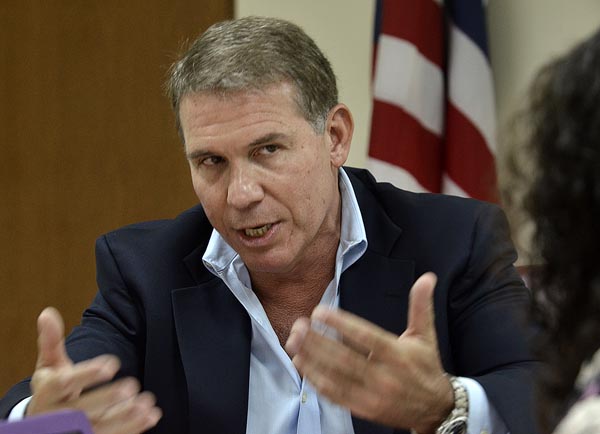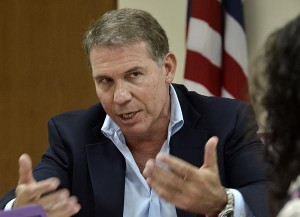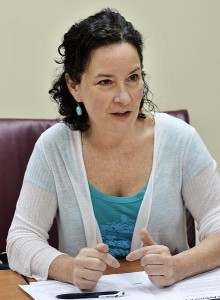PREPA’s resistance to green energy delays USDA funding

The Puerto Rico Electric Power Authority’s chronic foot-dragging on allowing individuals and businesses to connect their renewable energy systems to the grid is causing the island to lose out on federal funding opportunities available from the U.S. Department of Agriculture’s Rural Development agency, this media outlet confirmed.
During an interview, USDA Rural Development State Director for Puerto Rico, José Otero, said the main stumbling block is PREPA’s lack of a clear policy when it comes to renewable energy.
“One area we have been trailing behind other states is renewable energy, because PREPA doesn’t have a clear policy regarding the use of renewables,” he said. “What they do is integrate a token number of people who produce their energy to create goodwill, but they actually don’t really want it.”
However, the agency will have no choice but to open its doors to renewable energy producers soon, as it must comply with the recently enacted energy reform, he predicted.
“We’re not involved in PREPA right now, but we need to insert ourselves in the conversation. That’s the challenge because before, it was a completely closed environment,” Otero said. “The time is now, because PREPA is being reinvented, the way it works and how things go, and it’s going to be pretty different in the future.”
The lack of a clear roadmap for the use and integration of renewables — solar and wind energy — into PREPA’s systems has kept Puerto Rico residents from taking full advantage of a couple of key USDA programs:
- The Rural Electric Economic Development Inc., (REED) which provides energy financing and leverage investment in underserved rural areas;
- The Rural Energy for America Program, which offers assistance to agricultural producers and rural small businesses to complete a variety of projects, including renewable energy systems, energy efficiency improvements, renewable energy development assistance and energy audits.
“One of the goals is to bring up our level of participation in the REED program and I think it’s a very good occasion for Rural to be inserted in the conversation we’re going to be having in next few months on how PREPA will be reinvented and serving, and we’re definitely going to have to have a renewable energy policy in place. I would like to be part of that conversation,” Otero said, noting he also plans to meet with the Association of Renewable Energy Producers in coming days to discuss strategies.
From 2009 to May 2014, Puerto Rico has received $1.1 million in renewable energy funding, representing a fraction of all of the money up for grabs nationwide. However, during the same nearly six-year period, the agency has pumped some $2.3 billion into the island for other housing, infrastructure and economic development programs.
Recently, USDA Rural Development presented those numbers to the White House Task Force on Puerto Rico, which is keeping close tabs on the island’s use of federal funding.
“We went through the exercise of looking at different USDA programs, and the investment is substantial,” Otero said.
However, when it comes to tapping into the Rural Energy for America Program — a pet project in Congress — Puerto Rico is behind.
“We don’t have any local support for it. The banks are not willing to offer loan guarantees and the technology is expensive, so if you’re also not backed up by a commitment from PREPA to buy the extra power you generate, then it’s tough,” Otero said.
‘Leader in economic development’
Patrice Kunesh, deputy undersecretary of USDA Rural Development, who was in Puerto Rico for a visit last week, said despite its challenges, the island has been a “real leader in community economic development” within the agency’s 13-state southern region that includes it.
“It is making great progress and tremendous investments in a very unique environment: an island not connected to other communities or states, with its own transportation and economic networks,” she said.
Puerto Rico also has the distinction of having the highest poverty rate in the region, something the federal agency is looking to improve through targeted investments, she said.
“In every community we serve, we’re making an impact on poverty mitigation. The south by all accounts has the highest poverty level in the nation,” she said. “That makes the work doubly difficult and much more intensive, when reaching those communities and individuals.”
“Puerto Rico is special even among that, for its high concentrated poverty. The fact that we can make progress and improve the quality of life is spectacular,” Kunesh added.
One of the main tasks in the agency’s initiative is addressing energy costs, which are just a component of Puerto Rico’s notoriously high cost of living.
“If you can reduce the cost of energy that each homeowner pays, that money can go for food and other necessities and also be reinvested in communities in other places, which is a huge opportunity for Puerto Rico,” Kunesh noted.
















